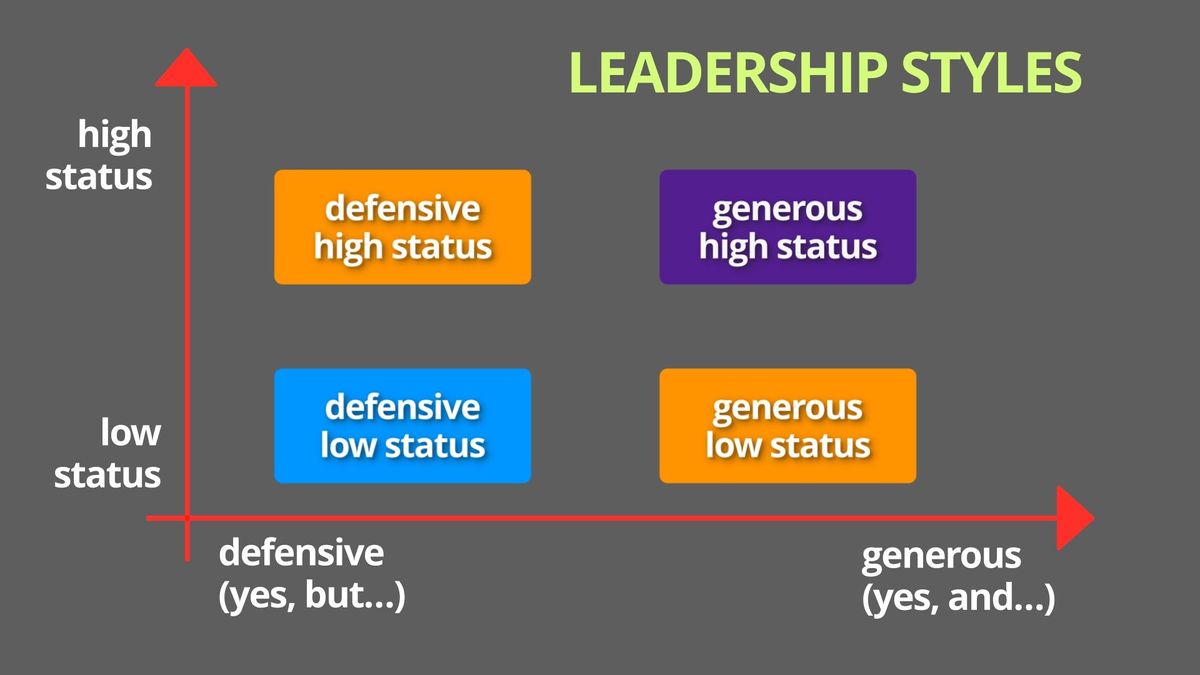
7 Ways to Boost Your Communication Skills in 2024
Whatever your goals this year, make sure communication doesn’t hold you back. Follow these 7 simple steps!
In 2024, it’s not enough to be great at your job. You also need effective communication to make an impact. Whether that’s:
- explaining complex topics to colleagues
- getting buy-in for changes
- presenting your ideas at meetings or conferences
- speaking off the cuff
…the list goes on! Whatever your career goals for this year, make sure you have the skills to pull them off. Here are 7 simple ways to boost your communication skills for 2024:
- Listen before you speak
- Stay in the moment
- Say what you mean
- Identify your audience
- Get on the phone
- Find out what the other person wants
- Choose your leadership style
Watch the full rundown in this video:
Or read on for the article version.
1. Listen before you speak
When you need to present ideas at work, it’s easy to talk too much. You’re keen to share your knowledge, or you try to fill the silence. Either way, you’ll end up missing what other people have to say. And the opportunities that come from understanding their needs.
People who rarely speak in meetings have a similar problem. Although you don’t talk too much, you still focus on yourself. For example, you might worry about when you’ll be called on. This gets in the way of listening.
The solution is to leave a gap. Your first job is to listen to others (try the active listening technique). This will:
- calm you down
- help you to relate your ideas to other people’s
You can tailor your message to the audience. And once you know what’s on their mind, it’s easier to make your ideas relevant.
2. Stay in the moment
At work, communication can make you feel anxious because you can’t control the outcome. Success depends on other people. For example:
- whether they understand your message
- what matters to them
- how they see the world
- what’s going on for them right now
Anxiety makes us dwell on the past or worry about the future. So we miss what’s going on in the present. Communication only happens in the now, between two or more people.

You may have a plan or a goal. Be ready to let go of that goal and throw away your plan. It’s more important to respond to the real live human who’s in front of you. Adapt and go with the flow!
3. Say what you mean
How often do you use the word “but” at work? It‘s a powerful word.
When we say “but” in a sentence, here’s what we really mean. Everything before that word is false!
Imagine I tell you that:
I like your report, but I think it needs yada yada…
That “but” cancels out the liking of your report. The truth is I don’t like your report. I’m pretending to like it, to sound nicer. We’re taught that this is polite, but it doesn’t show respect. Because I’m saying the opposite of what I mean.
At work, how often do you say:
- that’s a great idea, but…
- I agree with you, but…
- yes, but…
If you do this a lot, consider whether you’re saying what you mean. Or the opposite.
The classic version of this is, “yes, but…,” which is common in the workplace. Saying “yes” is risky, and saying “no” is considered rude. So we go with the safe option, pretending to say “yes” while we really mean “no”.

You can’t say “yes” to everything. Instead of “yes, but,” say “no” in a way that leads to a future “yes”. It’s like saying, “no, because…”. Affirm the person’s goal and open a conversation about how you can work together to achieve it. For example:
I like where you’re going with this, and I’d like to be part of it. Right now I’m not sure I can do what you’re asking. Can we sit down and discuss other ways we can work towards your goals?
In this way you can say what you mean. Without making promises you can’t keep.
4. Identify your audience
Most people start communicating by focusing on:
- what they want to achieve, or
- the ideas they want to share
This is the wrong place to start! First, you need to identify your audience. Who are they? What do they want or need? How does what you know affect their success?
Once you work this out, you can craft a message that speaks to their needs. Which means that what you share is relevant and interesting.
5. Get on the phone
There’s a growing trend in today’s workplace to use text-based communication. I’m talking about email, chat apps like Slack, or text messaging.
These tools are a good fit for activities like:
- sharing background information
- documenting decisions
- getting people up to speed
- business as usual / routine operations
- technical issues
The problem is, they are terrible for real communication. Like:
- discussions
- exploration and creativity
- tradeoffs or prioritisation
- different points of view
This type of communication needs live calls or in-person meetings. So you can check for understanding.

When you communicate via text, there’s no time or space to reflect back. You lose nuance. Which is why so many people end up in arguments or misunderstandings via email.
The best option, if you can do it, is face-to-face meetings. A room, a whiteboard and a couple of hours can do wonders. If that’s not possible, video calls are also great. You can see people’s expressions. Get their reactions. And make sure everyone understands each other. When video isn’t an option, audio is way better than email. Because it allows you to check for understanding.
6. Find out what the other person wants
When you want to make something happen at work, it’s normal to focus on your idea. You might tell people:
- about your plan
- why it makes sense
- benefits
- next steps
But talking about these things isn’t the best way to make your plan happen. Unless you are the only person involved. Because it misses out a step. You need to find out what the other people want first.
Talk to everyone involved or affected by your plan. What do they think about this topic? What’s most important to them? What are their hopes or concerns?
When you understand what all the people around your project want, you’re in a stronger position. Now you can tailor your communication to each audience. For example, you can:
- sell your plan by explaining a benefit to one department
- address a concern by showing how you can mitigate it
Sometimes you may even change your plan, once you hear other people’s views on it!
7. Choose your leadership style
Even if you don’t have the word “manager” in your job title, you need leadership skills for part of your job. For example, when you:
- share progress in a team meeting
- present findings to stakeholders
- coach junior colleagues
When you’re in these situations, which leadership style do you use? There are four.
For a full explanation, watch the video at the top of this article. Here’s a summary version.
Your leadership style is made up of two variables:
- High or low status
- Defensive or generous
Status is about the way you behave relative to others in the room. High status behaviours include:
- making yourself big
- taking up space
- keeping your head still
- talking slowly
- making strong eye contact
Low status behaviours include:
- taking up as little space as possible
- moving and speaking fast
- saying “um” a lot or apologising
- making very brief eye contact, then looking at the floor
When you’re in a leadership scenario, which set of behaviours do you adopt?

The other axis is defensive vs generous. The question to ask here is:
- do you accept other people’s ideas and add to them? (generous)
- or do you say, “yes, but…” to stay in control? (defensive)
This leads us to the four quadrants in the diagram above:
- Defensive low status (“jobsworth” in the UK) — people who behave in this way don’t end up as leaders.
- Generous low status — the clown. Rare but they do exist.
- Defensive high status — these people are feared but not liked.
- Generous high status — brings other people up without losing status.
The most likeable leadership style is generous high. These leaders are easy to work with and tend to make better decisions. Because they know how to listen and they don’t mind letting go of control.
More common, though, is defensive high. These leaders command respect. But they can’t let other people’s ideas win. This means they not likeable. They tend to be less flexible and harder to work with.
Ask yourself which style you tend to use. Would you like to change it?
Get your skills in shape this year
I hope you’ve found these seven tips useful. (Don’t forget to watch the video too.) Is this the year to get your communication skills in shape?
If you’d like to take it further, check out my courses and one-to-one coaching. Good luck!